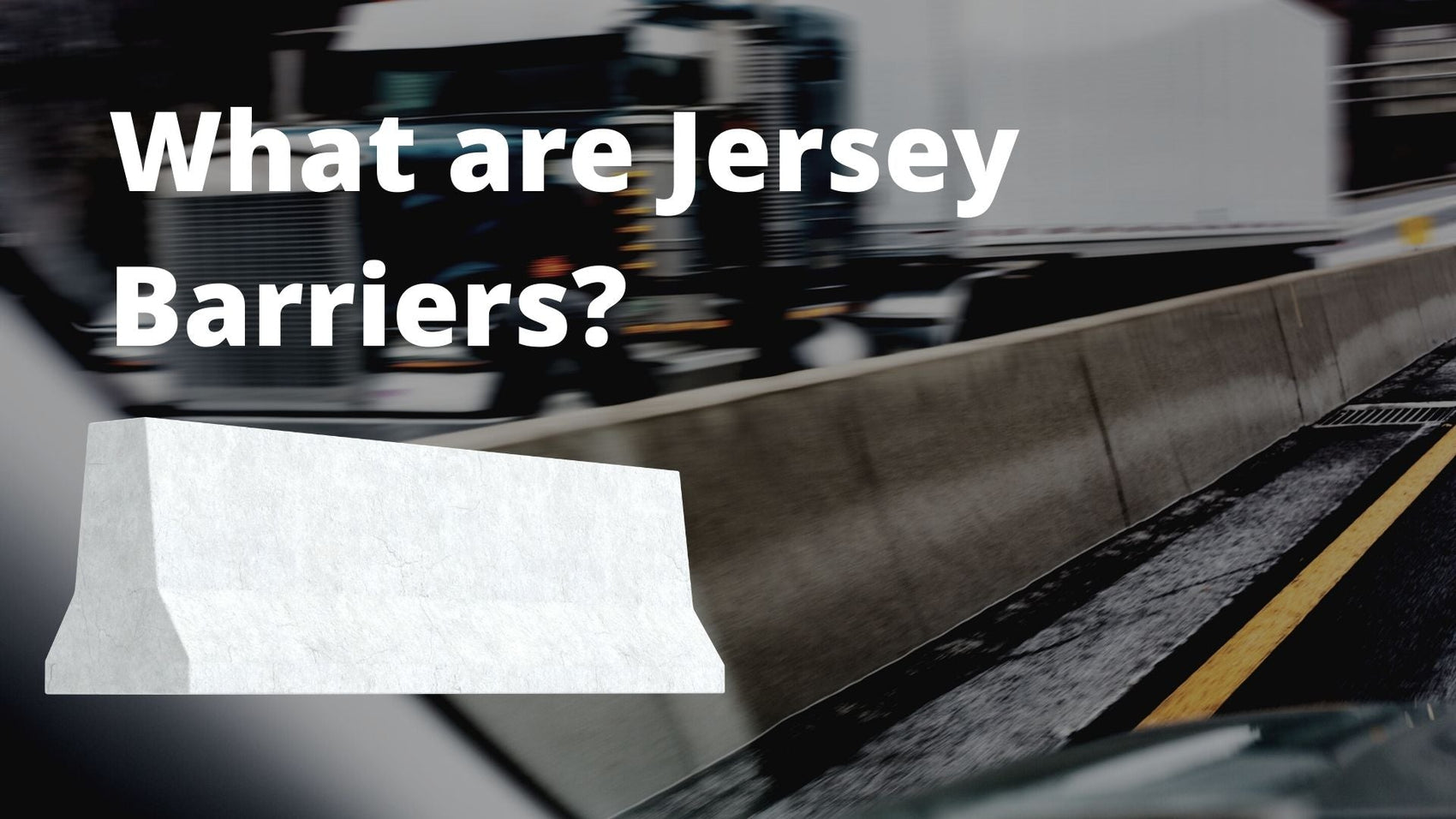Almost anyone who's driven a car on the highway is sure to have come across the "Jersey Barrier." Named after the state that popularized them back in the 1950s, these concrete or plastic structures are commonly used to divide lanes of traffic and prevent cars from crossing into the opposite lane.
Simple as they appear with a very non-ornamental, wall-like appearance, these barrier structures are specifically designed to deflect traffic and minimize vehicle damage.
If you look closely at the image below, you'll notice that the structure includes a ledge followed by two sloping angles, the first less steep than the second. Below, we'll talk about how this shape minimizes damage and increases highway safety.

First, we'll discuss the basic jersey barrier features that make it useful for lane division and construction safety.
Jersey barriers are very heavy, sturdy structures, usually made from concrete and steel rebar. Even when they're constructed with plastic instead, they are made to be hollow so they can be filled with sand or water. This is called "ballasting" and makes these barriers extremely heavy, even if not quite as heavy as the concrete alternatives. These types of ballastable barriers are portable until they are filled, making them especially useful for construction areas. These barriers are also available in brightly visible colors like red and orange.
As you might assume, the concrete jersey barriers are more commonly used for permanent lane-division where as the plastic jersey barriers are more popular for highway construction sites, keeping these teams safe.
How does a Jersey Barrier's shape work to deflect traffic?
If a distracted driver drifted slightly off course and into the opposite lane of traffic, they could potentially come into the path of many oncoming vehicles and could cause a multi-car crash. This kind of damage happens, and it’s horrific.If you put a simple wall between the lanes of traffic, however, the drifting vehicle would likely crumple, flip, or both. This could also cause a great amount of damage, not only to the vehicle itself but also to others sharing the road.
The angled shape of a concrete or ballasted plastic jersey barrier allows for a different outcome. Instead, the tire that is drifting towards the barrier has enough space to ride slightly up the angled barrier wall. This provides time for the driver to redirect the vehicle back in the appropriate pathway before any accidents occur.
This explains the use of the first slope, but what is the purpose of the second, steeper slope?
While the first angle allows the oncoming tire to ride upward until the driver gains control, the second slope is useful when the oncoming car has a sharper angle of approach. In a case like this, the upper slope allows the bumper to lift the vehicle until the tire can connect with the lower slope and ride upward until the driver regains control and redirects the car. This lifting effect also reduces the high amount of friction between the tire and the pavement. High friction can make the car behave erratically, so reducing this is important in minimizing harm.
So, the next time you encounter a jersey barrier, remember the science and purpose behind its unassuming form. It represents a collective effort to enhance the safety of our roadways, exemplifying how even the most modest structures can possess the power to make a significant difference in preventing harm and promoting safer travels for all.

